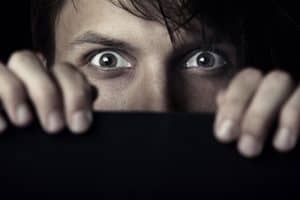Are Eyewitnesses Really Reliable?
 You’ve seen it in the movies and on TV. The drama about who committed a crime ends when an eyewitnesses says, “I saw So-and-So Kill that man with a spoon*. He did it or she’s the one!” (*Or whatever. TV is terrible. Don’t let it rot your brain.) It always sounds or seems like doom when these pronouncements are made. That’s not always the case. Many times, the eyewitness is mistaken. Often, defense lawyers can attack the credibility and reliability of the eyewitness.
You’ve seen it in the movies and on TV. The drama about who committed a crime ends when an eyewitnesses says, “I saw So-and-So Kill that man with a spoon*. He did it or she’s the one!” (*Or whatever. TV is terrible. Don’t let it rot your brain.) It always sounds or seems like doom when these pronouncements are made. That’s not always the case. Many times, the eyewitness is mistaken. Often, defense lawyers can attack the credibility and reliability of the eyewitness.
Types of mistaken identifications
Identifying the wrong person isn’t just confined to the jury trial. Witnesses are often called to identify a suspect or a defendant during various pre-trial stages such as:
- Here, the eyewitness is asked to pick someone out among several different suspects or people called into the lineup. Mistakes can happen if the people in the lineup all look so different such that there’s only one person (even though it’s the wrong person) that can be reasonably identified. For example, suppose all the people in the lineup are over six feet tall except for one person who is five feet tall. If the assailant was small, it’s natural for the victim to select the one smaller person in the lineup.
- Photo arrays. These are similar to a lineup except that the victim or witness chooses from a set of pictures instead of living people.
- Voice lineups. Here the witness is asked to choose from audio recording or live statements without seeing the people in the lineup.
Some of the ways an identification can be attacked
Defense lawyers will question the witness about many of the circumstances surround their identification. Any one of these circumstances can raise a reasonable doubt about the credibility of the identification. These circumstances include:
- The use of weapons. When guns and other weapons are used, people tend to focus on the weapon and not the person’s face.
- Was there any violence? When encounters are violent, the witnesses and victims are more focused on their safety than the assailant.
- Did the witnesses know the defendant before the offense occurred? Knowing a person can create a bias.
- How well could the witnesses see? Was it dark? Were there lights around? Was it sunny or raining?
- Other circumstances include:
- Was the wrongdoer wearing a mask?
- Did the witness have any vision problems
- Was the witness drunk or under the influence of drugs?
- How much time was there to actually see the wrongdoer?
As a defense lawyer, I often question the way in which the lineup or identification was made. For example:
- Were the different eyewitnesses separated so they couldn’t hear what the others had to say?
- Did the officer take a statement from the eyewitness before the identification which could be compared to the witnesses’ selection?
- Did the officer or person monitoring the identification make any improper suggestions or tips to pressure the eyewitness?
- Was the eyewitnesses told that the wrongdoer might not be in the lineup?
- Was the identification process recorded?
Many times, a person who mistakenly selects the wrong person at one of these lineups or photo arrays gets locked into thinking that person they chose must be the wrongdoer, when the truth lies elsewhere.
Judges will be asked to review if the lineup or identification was suggestive and if the identification is reliable under the totality of the circumstances. Judges will have to rule on whether the defendant was denied his/her right to counsel and his/her right to confront the eyewitness.
At Drew Cochran, Attorney at Law, our Annapolis criminal defense lawyers are born skeptics. We question everything the prosecution, the police officers, and the witnesses say and do. Often, the testimony of witnesses is not credible. There’s a big difference between looking like someone and actually being the person who committed the crime. For help defending any criminal charge, call our experienced Annapolis and Ellicott City lawyers at 410-271-1892, or fill out our contact form to schedule an appointment.
And remember: Keep Calm – and Call Drew.

Drew Cochran has practiced criminal defense law in Annapolis for more than 20 years. He is a member of the Maryland State Bar, Anne Arundel County Bar, and the Maryland Criminal Defense Attorneys’ Association. Named a “Leading Attorney” by What’s Up Magazine: Annapolis in 2011, he handles criminal defense, DUI defense, juvenile law, and all felony and misdemeanor defense throughout Maryland. Read Full Bio
